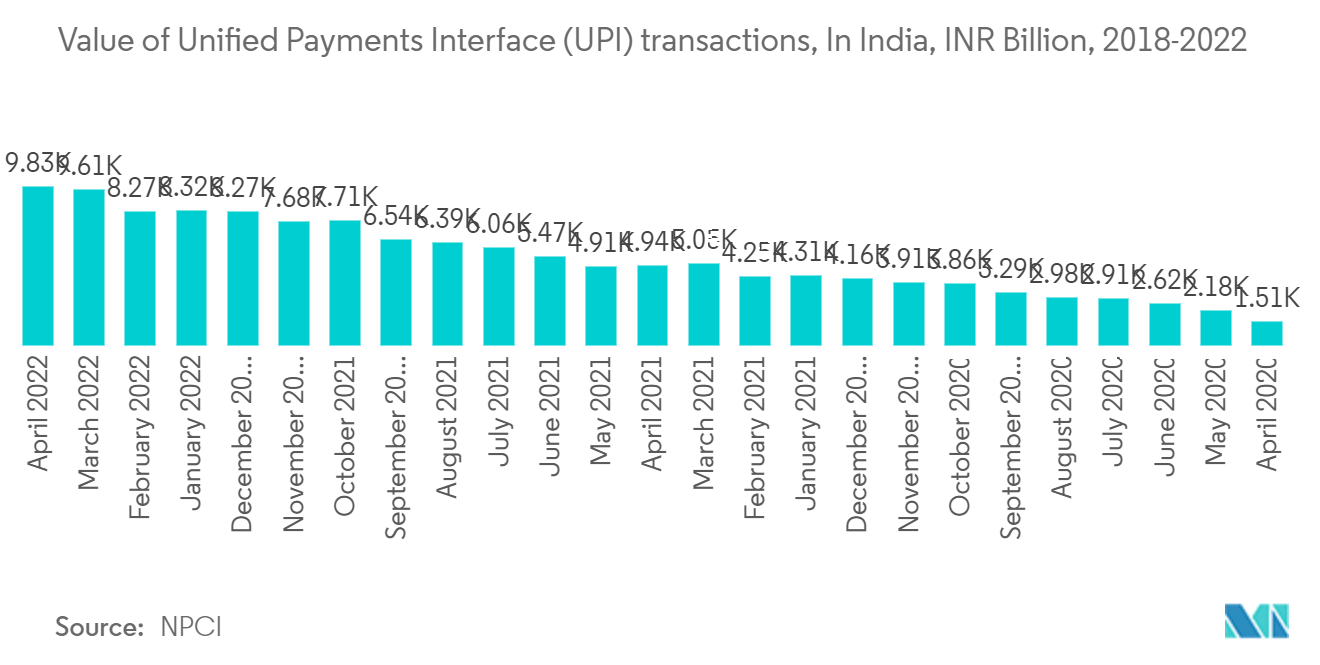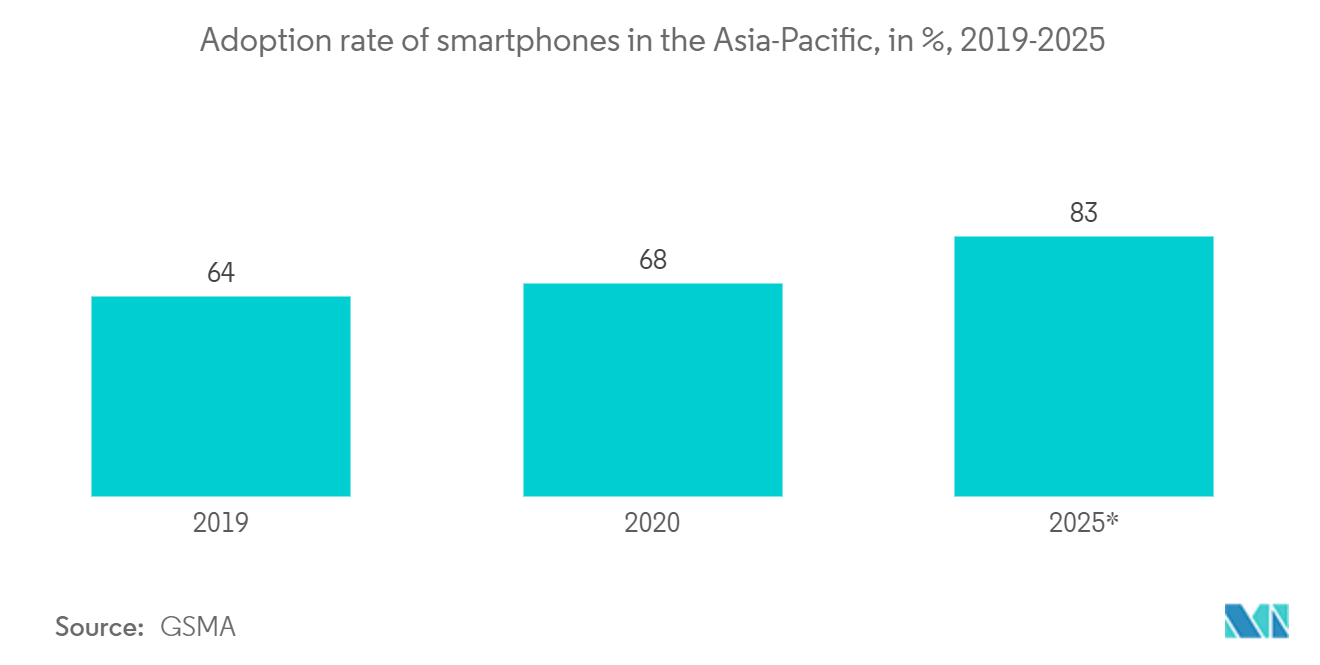Market Trends of Asia Pacific Real Time Payment Industry
This section covers the major market trends shaping the APAC Real Time Payment Market according to our research experts:
India to lead in terms of Volume of Transactions and economic growth
- According to a survey by ACI, real-time payments are expected to enhance India's GDP by USD 45.9 billion in 2026, with real-time payments transaction volumes expected to top 206 billion by then.
- According to an ACI estimate, India accounted for 48.6 billion real-time transactions in 2021, over three times that of China (18 billion transactions) and nearly seven times that of the United States, Canada, the United Kingdom, France, and Germany (7.5 billion).
- Real-time payments accounted for 31.3% of overall payments transaction volume last year, thanks to merchant adoption of UPI-based mobile payment apps and QR code payments and increased use of digital payments during the Covid-19 outbreak. Real-time payments' proportion of overall payments volume is expected to climb to over 70% in 2026, as consumers rapidly transition from cash to mobile-based real-time payments, skipping payment cards.
- According to the latest FIS poll, a prominent provider of technology solutions for retailers, banks, and capital markets organizations globally, India's daily real-time transactions have doubled to 41 million due to the COVID-19 pandemic.
- According to a report provided by ACI Worldwide, the Indian real-time payments market is well developed compared to other markets such as the United States, the United Kingdom, Canada, and Australia. The Immediate Payment Service (IMPS) and Unified Payments Interface (UPI), both of which have witnessed considerable usage in recent years, are among India's real-time payments, according to the paper titled "Prime Time For Real-Time 2022." These are also considered to be India's primary drivers of real-time payments.
- The universal payment interface (UPI) transactions in India were estimated to be worth over 9.8 trillion Indian rupees as of April 2022. Although this was a little rise from the previous month, the value of UPI transactions had climbed significantly from August 2018, when it was less than 550 billion Indian rupees. UPI was a National Payments Corporation of India (NPCI) platform introduced in 2016. It allows users of payment service providers like PhonePe or GooglePay to connect with banks and transfer money using NPCI as a switch. It's easier to utilize than earlier transaction methods like IMPS.

Increased Smartphone and Internet Penetration to drive the Market
- Smartphones have become the most popular device in India and globally due to the continual need to be connected. People, especially those who live in urban areas and have hectic lifestyles, have become accustomed to communicating on the go. Smartphone ownership is no longer a luxury, thanks to increased disposable income levels and simple financing options (such as EMI). This is a reality for a new country with a huge working population, such as India. Furthermore, tight rivalry among handset manufacturers and technological advancements continue to drive down smartphone prices, increasing affordability and sales growth.
- Operators around the Asia Pacific are leveraging the scale and utility of mobile networks and services to help large and small businesses implement new digital solutions in accordance with Industry 4.0 goals, in which 5G and IoT will play significant roles. In the area, the second wave of 5G network rollouts has commenced, with several 5G-related activities taking place in India, Indonesia, and Malaysia.
- The introduction of 5G in some of these markets could encourage the mass manufacture of more affordable 5G devices for lower-income users and the development of novel 5G applications for consumers and businesses in emerging markets. By the end of 2025, 5G will have surpassed 2G and 3G in total mobile connections, accounting for 14% of all connections, according to the GSMA Mobile Economy Report 2021.
- Connectivity will be critical in rebuilding economies and making them more resilient to future shocks as the Asia Pacific continues to deal with and eventually emerge from the pandemic. 5G networks, cloud services, edge computing, AI, big data, and the Internet of Things will all play a crucial part in realizing the full potential of a post-pandemic digital economy, boosting the real-time payments market.
- The usage of a mobile phone for money transfer is now not only acceptable but also the new normal throughout the Asia Pacific. AliPay and WeChat Pay in China, PayTM in India, OVO, ShopeePay, LinkAja, and GoPay in Indonesia, LINE Pay in Japan and Taiwan, Kakao Pay in South Korea, GrabPay in Malaysia and Singapore, and Gpay and Paytm in India are among the market leaders.


